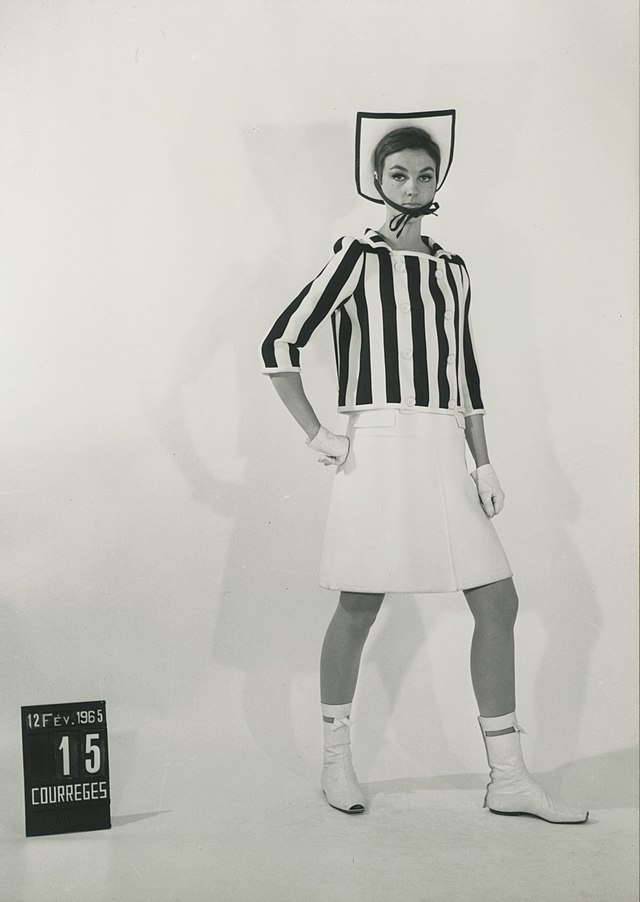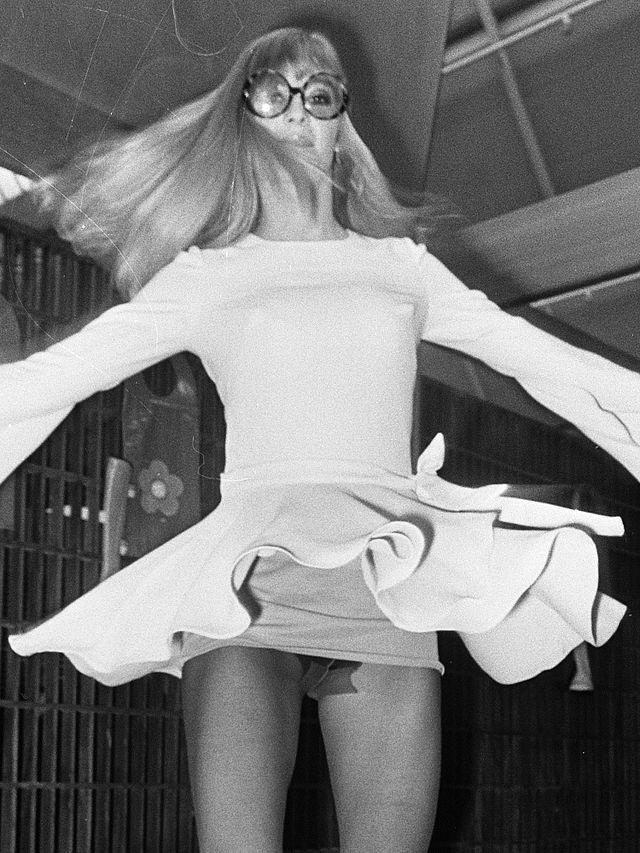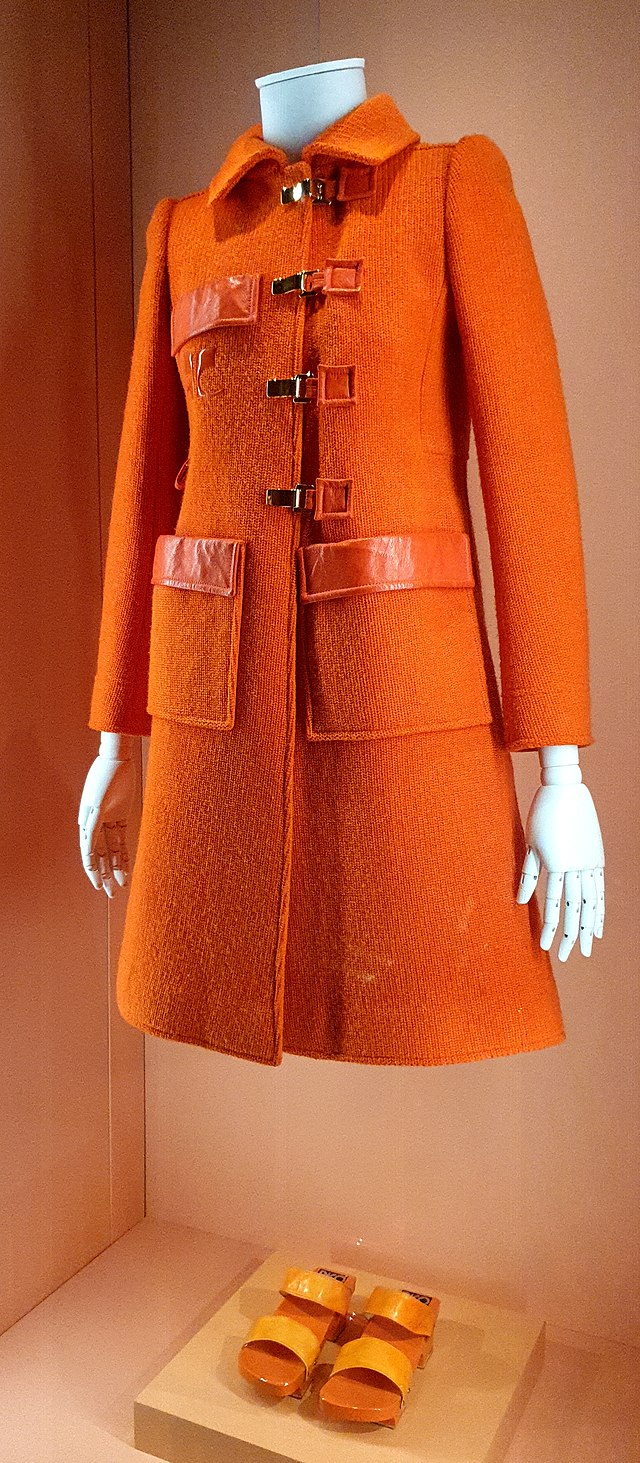The Space Age of Fashion

The Space Age of the 1960’s is often regarded as one of the most transformative eras in terms of technology and advancements within the 20th century. With the rapid increase of desire for innovation and invention, the world of fashion and design saw major shifts towards modernism. Before the 60’s, women’s fashion was conservative and rigid in form. It heavily relied on long hemlines, feminine silhouettes, and soft colors.
The world of design and fashion soon changed as the rise of star designers Pierre Cardin, Paco Rabanne, Mary Quaint, and Andre Courrèges took the world by storm in the 60’s. These designers experimented with metallic fabrics, plastic, and PVC, creating avant-garde silhouettes and space-inspired motifs. The use of unconventional materials and geometric shapes reflected a societal fascination with technology and innovation. They also challenged traditional notions of modesty and femininity. Their designs represented a break from conservative social norms and symbolized women's newfound freedom to express themselves through fashion.

One of the most fundamental moments in fashion that impacted the accepted standards of dress was the invention of the mini skirt. The inventor of the mini skirt is often contested as many space age designers often found inspiration in similar places but most often it is between Andre Courrèges and Mary Quaint who hail as the inventor of the mini skirt. This long feuded argument often leads back to the credit value of street fashion versus high fashion. Quant states that, “it wasn’t me or Courrèges who invented the miniskirt anyway. It was the girls in the street who did it.”
Shorter hemlines became a star item within this up and coming generation after being adorned by famous figures of the time like Twiggy and Gloria Steinem. The mini skirt rose in popularity amongst young girls and women in the 1960’s and began to rock the boat with harsh opinions from critics. Even Chanel questioned, ‘Have they all gone mad?’ in the New York Times in 1965. This feedback was not uncommon for London based designer Mary Quant. Quant began her fashion line in protest against the classic fashion of the '50s, believing that the “young were tired of wearing essentially the same as their mothers,” she said in her autobiography Quant by Quant. In defense of her critics, she claimed that the mini skirt was needed for modern women to be able to chase after buses and public transport as more women began joining the workforce, but her passion for women’s rights and fashion liberation was ultimately the driving force. The intention of the miniskirt was not to show off women’s legs but to free them from the long skirts and restricting forms of decades past.
Beyond the mini skirt, Mary Quant became highly recognized within the fashion world of the 1960’s. Her designs often featured short tunics with bright tights and white plastic collars. These Quant staples were spreading like wildfire throughout the London scene. It encapsulated the vibrant essence of 1960s London: liberated, dynamic, youthful, groundbreaking, and nonconformist. Quant's designs resonated with young women everywhere who sought playful, flirtatious fashion that mirrored the evolving landscape of sexual expression in society.
Over in Paris, Andre Courrèges shocked the high fashion world. In 1964, He showcased his futuristic, minimalistic dresses which featured short hemlines. Unlike Quant, Courrèges, known for his restrained approach, infused sophistication and maturity into his skirt designs, contributing to the acceptance of the mini skirt within the world of French haute couture. Born on March 9, 1923, in Pau, France, Courrèges he originally attended school to become a civil engineer, but could not ignore his love for art and design. After a brief stint at the fashion house Jeanne Lafaurie, he became an assistant to Balenciaga.

Spending a decade in the mentor's atelier, Courrèges established his own house in 1961, drawing from his background to craft new cuts and shapes inspired by geometry, particularly squares, triangles, and trapezoids, like his mentor. Additionally, Courrèges showcased an interest in modern architecture and fabric technology, pioneering the use of materials like plastic and PVC in his collections. He found great inspiration in the American space race, often expressing a sentiment of feeling more American than French.
“I love America, I love the American spirit. The spirit of going to the moon. The American way of life. The grandeur of American space. America is a formidable, formidable country.” Courrèges stated. The 1964 spring collection by Courrèges startled the fashion world with futuristic designs that were ahead of its time. His works also included cut-out dresses, A-line skirts, glossy trousers and astronaut-style goggles and helmets. The color scheme focused on sterile whites decorated in silver tones, striking primary shades and fluorescent colors.
Courrèges paired his version of the mini skirt with white or colorful leather calf-high boots, which later became known as ‘go-go boots’. Courrèges sparked a fashion revolution that was widely imitated throughout the 1960s. Emphasizing functionality and freedom in clothing, Courrèges was among the first designers to champion ready-to-wear fashion. “You don’t walk through life anymore. You run. You dance. You drive a car. You take a plane, not a train. Clothes must be able to move too,” Courrèges stated. He did not follow the contemporary trends, instead he created a different future and continued to imitate what was formerly ultramodern. Still today, many space aesthetics are borrowed from Courrèges and often refer to his style of designing clothes.
“After Courrèges, nothing was as it was before.” -Yves Saint-Laurent.
The 1960s Space Age witnessed the evolution of fashion. It was characterized by experimentation, futuristic designs, and a turn from social norms. Designers such as Mary Quant, Andre Courrèges, Paco Rabanne, and Pierre Cardin became headliners in the industry through their avant-garde approaches that went beyond borders and broke the rules. The miniskirt which Mary Quant produced was an act of defiance against traditional fashion. She invited women to embrace liberty as well as self-expression. Andre Courrèges used his sleek geometric designs to show his interest in space and technology while Paco Rabanne’s choice of materials and innovative silhouettes defined the era of the Space Age. Pierre Cardin thought differently about his brand; he pioneered licensing deals aimed at extending its reach among more consumers. These designers forever influenced the direction of fashion with their designs and forward thinking for years to come in this sector.
The Space Age of fashion, as seen through the lens of its defining designers, continues to inspire creativity and innovation in the world of fashion today.





